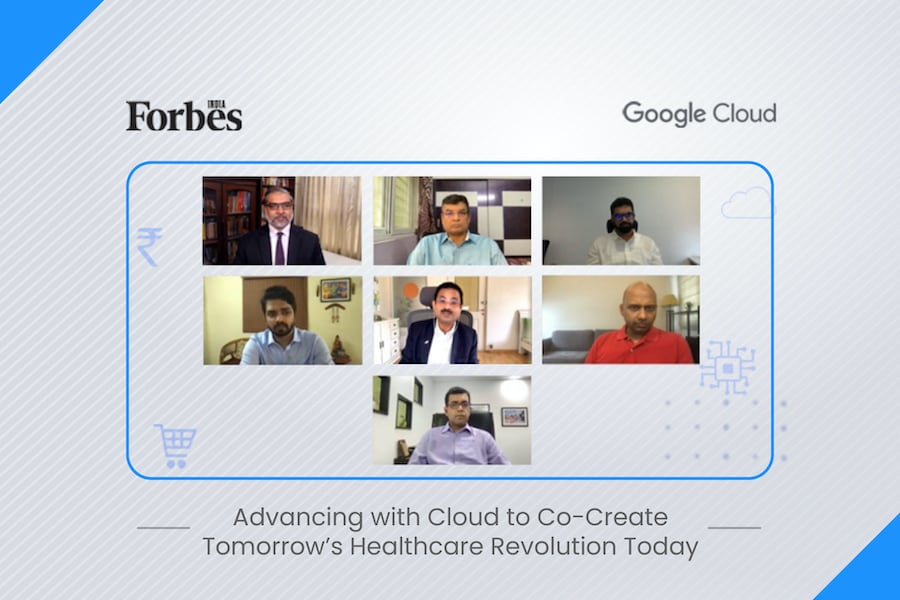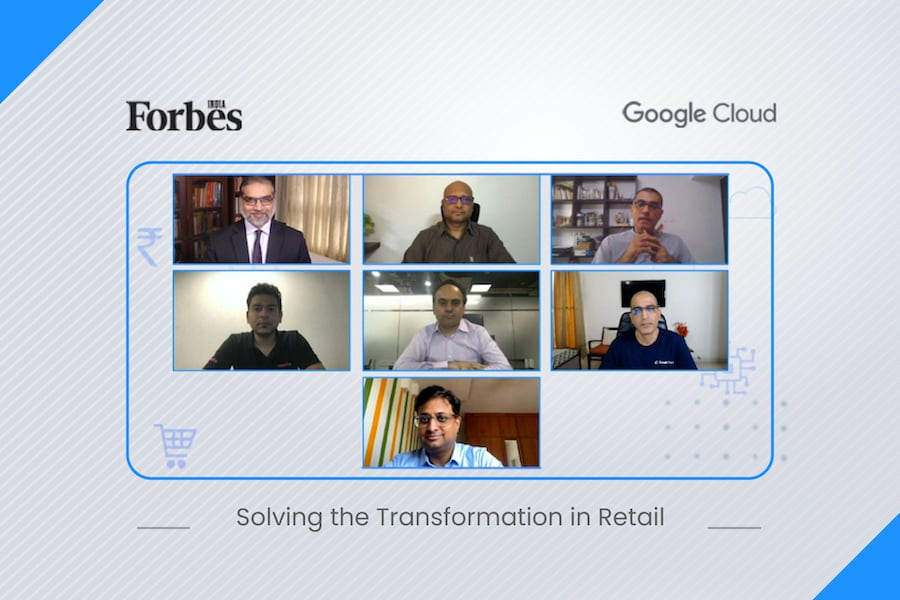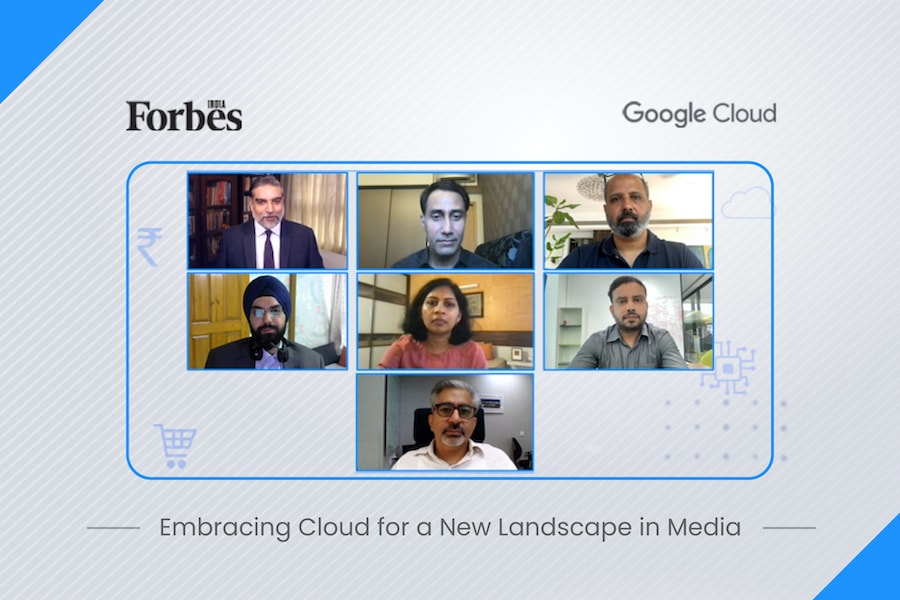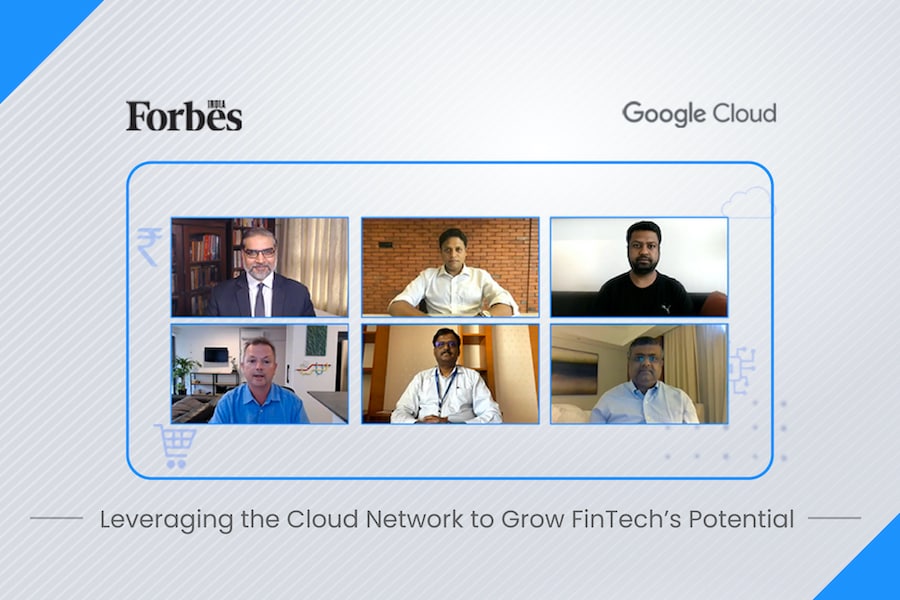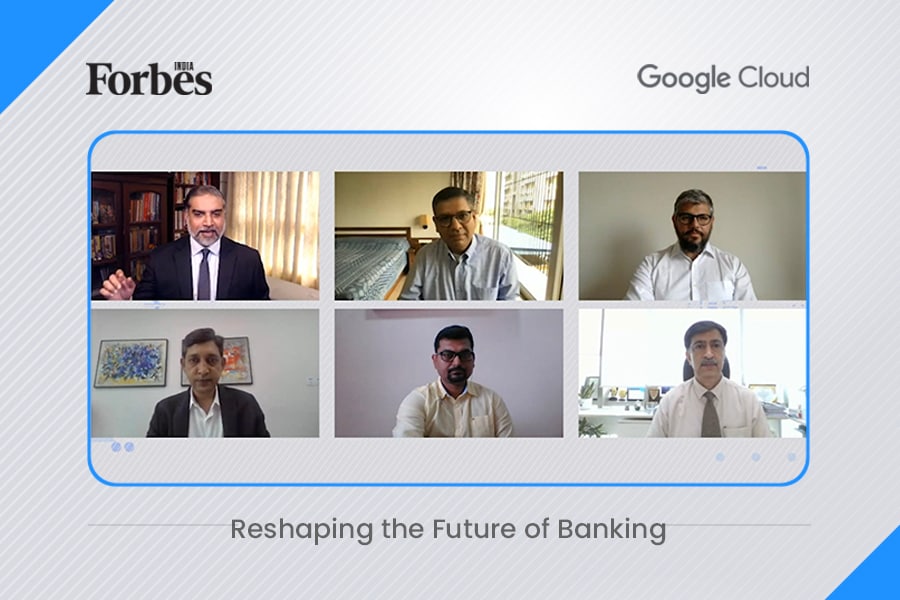To ensure a continuum of care, Indian healthcare needs to embrace the cloud
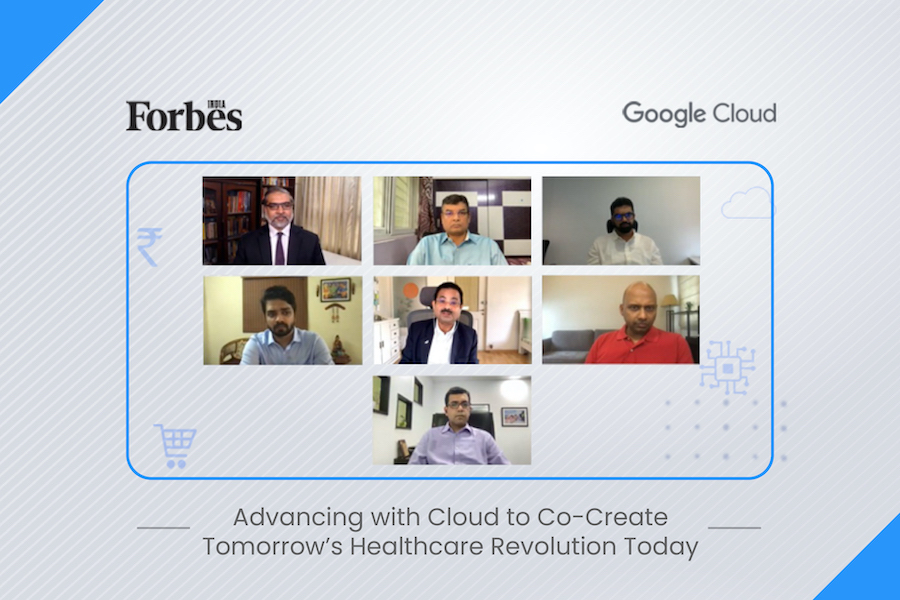 Telemedicine and remote patient monitoring are being increasingly adopted by service providers to virtually manage patients, predict and prevent illnesses and achieve improved clinical outcomes. But what are the application possibilities opening up for the use of technology in healthcare beyond telemedicine and teleconsultation that are being powered by the cloud? These topics were discussed in the Healthcare panel of The Next Wave of Cloud series of industry-focused roundtable discussions organised by Forbes India, in association with Google Cloud.
Telemedicine and remote patient monitoring are being increasingly adopted by service providers to virtually manage patients, predict and prevent illnesses and achieve improved clinical outcomes. But what are the application possibilities opening up for the use of technology in healthcare beyond telemedicine and teleconsultation that are being powered by the cloud? These topics were discussed in the Healthcare panel of The Next Wave of Cloud series of industry-focused roundtable discussions organised by Forbes India, in association with Google Cloud.
“We at Google believe that in healthcare, especially in the area of remote healthcare delivery, whether it is outpatient tele consult or remote chronic care or condition management, we are in the face of technology tillers,” said Vamsi Ramakrishnan, customer engineer and infrastructure modernization specialist, Google Cloud. “We believe that assistive and asynchronous technologies are the way to go and we feel that we have a long way to go when it comes to improving the quality of telemedicine in teleconsultation,” he said.
One firm implementing that at scale is Apollo 24/7, India’s largest multi-channel digital healthcare platform in India, created with a vision of eliminating flexibility blockages from the healthcare industry. Its app, launched just before the pandemic-related lockdown started, was among the fastest growing health apps in the country and is operational in over 400 cities already.
Explaining how the digital unit of India’s Apollo Hospitals used artificial intelligence and machine learning at scale, chief technology officer Madhu Aravind said they relied on real-world data of their doctors’ treatment records over the last decade and across more than 20 million consumers.
“Then of course, the knowledge that our physicians have in terms of how treatment has to be done and so on and so forth…we kind of put the two together to figure out a system where if somebody is actually coming in with certain symptoms, it kind of helps them (doctors) figure out what are the right questions to ask, what should be the logical next step? What is the prognosis?” Madhu said.
“Expert systems have been around for at least 50 years,” Madhu said. “But how to execute it has drastically changed and we are actually making a significant dent in that.” For consumers, chronic and non-communicable diseases can be controlled or even prevented with increased and frequent interventions from the use of technology.
Bringing together data over 70 plus hospitals, 1000 odd diagnostic centers and clinics, and 4000 plus pharmacies presented its own challenges.
“Where we started, the challenge was to how do we bring a single view of the user for all these systems irrespective of what ERP systems they use,” across clinics and pharmacies, Madhu said.
This addresses a pain point in the Indian healthcare ecosystem, opined Dr. Rana Mehta, Partner and Leader, PwC India.
“If you look at hospitals in India, they've focused on acute episodic care,” Dr. Rana said. “They don't know where you came from,” he added. “As long as they did the surgery and when you go, they don't work across the continuum of care.”
“What really happened in the pandemic was that they (Indian healthcare providers) realised that they were not able to serve the patient because mobility stopped,” Dr. Rana said. “People didn't come to outpatient, they didn't do your diagnostics, they didn't do your pharmacy,” he pointed out.
“So clearly the continuum of care was missing,” Dr. Rana said. “And I think the whole focus now has come on to putting that continuum of care.”
Speaking of the pandemic accelerating innovation, Dr. Rana pointed out: “The vaccine would have taken ten years, it's happened in ten months.”
And yet, every individual component in the well-oiled machine of Indian healthcare runs its own proprietary systems. Google Cloud’s healthcare data engine might solve this.
“I think every healthcare player is trying to solve their own version of the Tower of Babel problem,” Vamsi said, referring to the Biblical story of when the people of Mesopotamia tried to build a tower to reach heaven but God confounded their speech to make sure that people don't understand each other. “I think the state of healthcare data is also in that sort of a situation.”
Google Cloud is trying to address these challenges by unifying these silos of data into a single interoperable format which it then makes available as an application programming interface or API, Vamsi said. “So providers or whoever has access to this data can focus on building higher order services that impact patient outcomes instead of lumping them with these silos of data,” he added.
The transformation is also extending to the realm of drug discovery and development.
“India is very cost sensitive and now in the whole world we are seeing that there is a hue and cry on medicine cost,” pointed out Anjani Kumar, chief information officer of Strides Pharma Science Ltd.
The pandemic also exposed the chinks in the supply chain as was evident with the lack of remdesivir during the pandemic, Anjani pointed out.
“You may have heard that data is the new oil but if you don't extract the oil, it has no use for refining,” Anjani said. Similarly, “supply chain data was always there but we never used it,” he added.
On the supply side too there has been innovation due to the pandemic, said Nikhil Khekade, chief of staff and digital transformation, MedikaBazaar, India’s first B2B medical procurement marketplace.
“You have to use (data) internally to make sure that you are procuring items at the right places and at the right time because accessibility is an issue especially in Tier 2 and Tier 3 towns,” said Nikhil. “You need to work on your AI-ML techniques to make sure that you are able to predict how much you need and at what location, especially in a country like India, where during the COVID crisis people were not able to find the products they needed.”
Last but not the least healthcare providers will need to strike a right balance when it comes to automation, pointed out Ramasubramani Ganesan, chief technology officer, Portea.
“Being in the home healthcare space, and also offering services, we realise that people are way more comfortable acquiring services when they speak to someone, and they understand what does it mean, what are the trade offs before they decide to go ahead with it?” Ramasubramani said. “But at the same time, there's a lot of benefits when it comes to automation, in terms of bots being involved…so the right balance becomes very, very critical,” he added.
“I think it's a question of figuring out how quickly to push the boundaries because one expects customers who are very comfortable with technology, thanks to some experience from non healthcare industries,” Ramasubramani said. “But at the same time when it comes to healthcare, they also have this perspective in mind that somebody should be involved...it can't be just a machine at the other end who's taking care of stuff.”
Perhaps a right balance for the industry would be to use as much technology as possible to help a doctor rightly, and timely, make a diagnosis and achieve the seamless integration between humans and technology for the good of mankind.
The pages slugged ‘Brand Connect’ are equivalent to advertisements and are not written and produced by Forbes India journalists.


